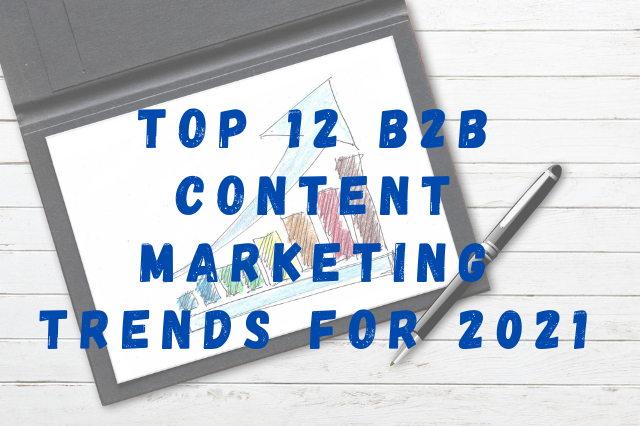Over the past few years, B2B marketing has seen some dramatic changes. While networking, site visits and face-to-face meetings were once considered the only way to bring more business, today even B2B marketers need to have a presence online. B2B content marketing has become a very important lead generation avenue, and no B2B marketing strategy is effective without it. B2B content marketing trends keep changing every year. Keeping abreast is important for all B2B content marketers, so we are sharing these key trends here for your reference:
1. Video content
2. Virtual events
3. Co-marketing and partnerships
4. Podcasts
5. Artificial Intelligence
6. Search intent
7. Live videos
8. Data-driven content marketing
9. Exclusive content for email marketing
10. User-generated content
11. Omnichannel Marketing
12. Experiential content
If you wish to compare these to previous years’ trends, here are the lists for digital marketing trends for 2020 and content marketing trends for 2019.
1. Video content
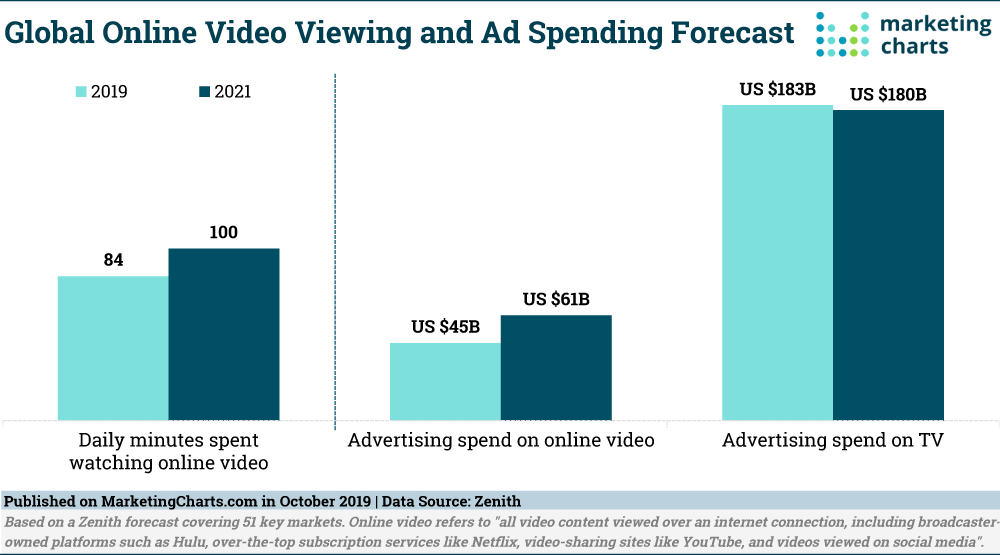
Video content forecast for 2021 (Source: Marketing Charts)
Video content is by far one of the most popular types of content for digital marketing and the trend will continue in 2021 as well. According to the Content Marketing Institute’s report on B2B content marketing trends for 2021, 68% of B2B marketers have used pre-produced videos as a popular type of content in the past year.
Video content makes it easier for you, as a B2B content marketer, to showcase your USPs and get your message across. Videos give you the scope to show how your business functions behind the scenes and tell your prospective customers everything they need to know within a few minutes. From the client’s perspective, it is a much more convenient and quick way of getting the necessary information about your business compared to reading an article or a sales proposal.
The options in video creation for B2B marketing are endless. You can use a simple online video editor to create explainer videos, tutorials, testimonials from existing clients, storytelling videos, interviews with industry experts and much more.
2. Virtual events
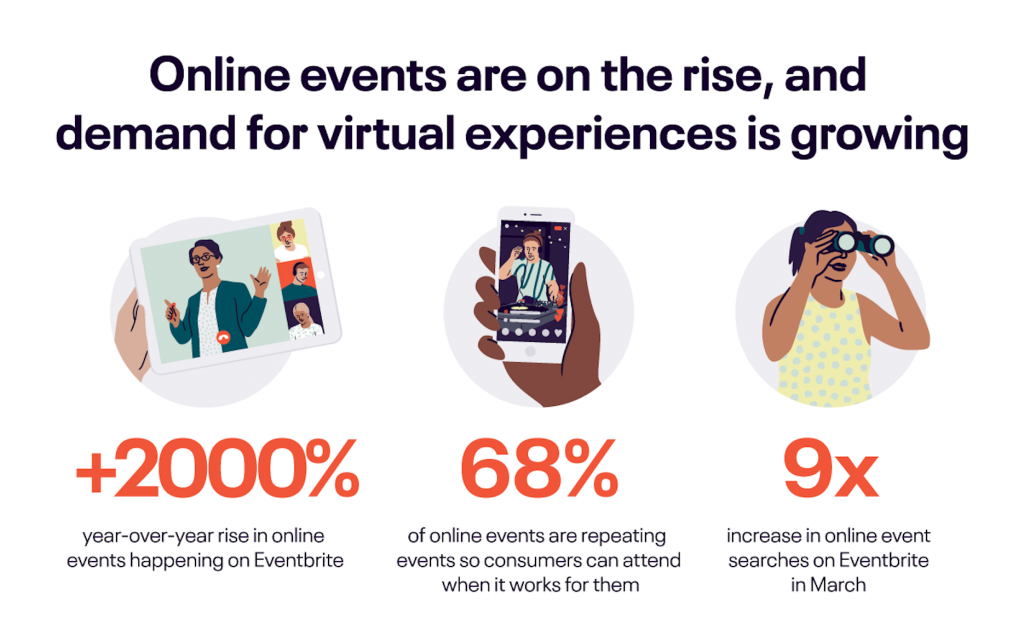
Virtual events statistics 2020 (Source: Eventbrite)
Owing to the pandemic in 2020, many businesses have shifted their focus from in-person events to online or virtual events for marketing. With this paradigm shift, it has become even more essential for businesses to explore new ways of engaging their clients online. Most B2B content marketers surveyed by the Content Marketing Institute said that virtual events produced the best content marketing results for their companies, along with blog posts and articles.
Virtual events may include webinars or online courses on relevant topics, interactive sessions for information sharing and discussions, or even product launches and more. Carrying out these events virtually is much more cost-effective as well as scalable than in-person events. While the arrangements required are minimum, you can expand your reach to audiences from across the globe which is difficult to achieve in offline events.
3. Co-marketing and partnerships
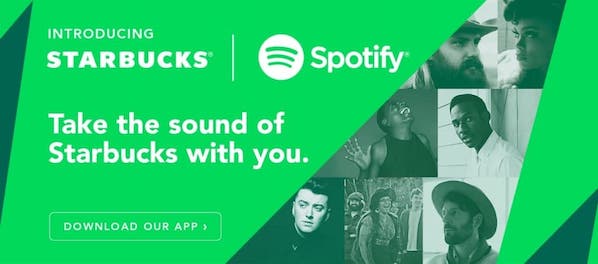
Co-marketing campaign by Starbucks and Spotify (Source: Hubspot)
Co-marketing is not a new concept for B2B marketers but it is definitely one content marketing trend that will continue to be relevant over the coming years. Particularly as the influence of social media keeps on increasing, it has become essential for businesses to partner with other brands or industry leaders to make their presence felt.
Cross-promotional content, be it blog posts, videos or more, created with other businesses, or interviews with thought leaders in the industry can be great for your own publicity. Working with an industry leader, a popular brand or an influencer can give your business a much wider reach as you will grab the attention of their followers too.
4. Podcasts
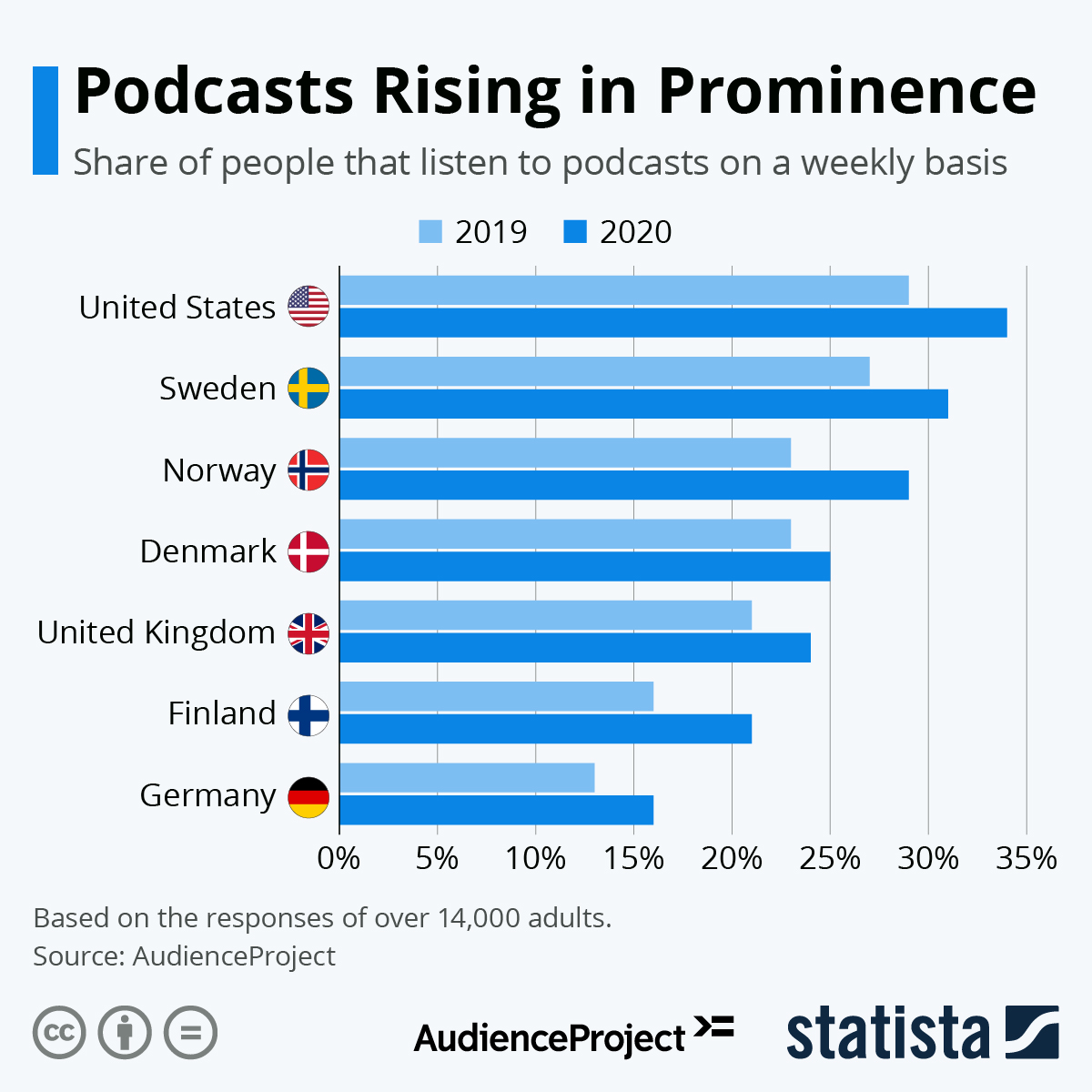
The increasing popularity of podcasts worldwide (Source: Statista)
Podcasting is a content marketing trend that has picked up pace in the past few years and is now a part of most businesses’ marketing strategies. In a 2018 survey by Discover Pods, 62.6% of the respondents said that they listened to more podcasts than they did a year ago. And this rise in listenership is predicted to increase further in the near future.
B2B content marketers cannot afford to let go of this opportunity. Particularly when it is such an easy way of creating good, valuable content for their audience. Any good conversation with a leader in the industry or an interview with a client about their experience with your brand can be made into an informative podcast. Even an in-house expert talk from one of your experienced colleagues can be the perfect material for a good podcast. The production costs are small and many podcast networks even allow you to upload your podcasts for free.
5. Artificial Intelligence
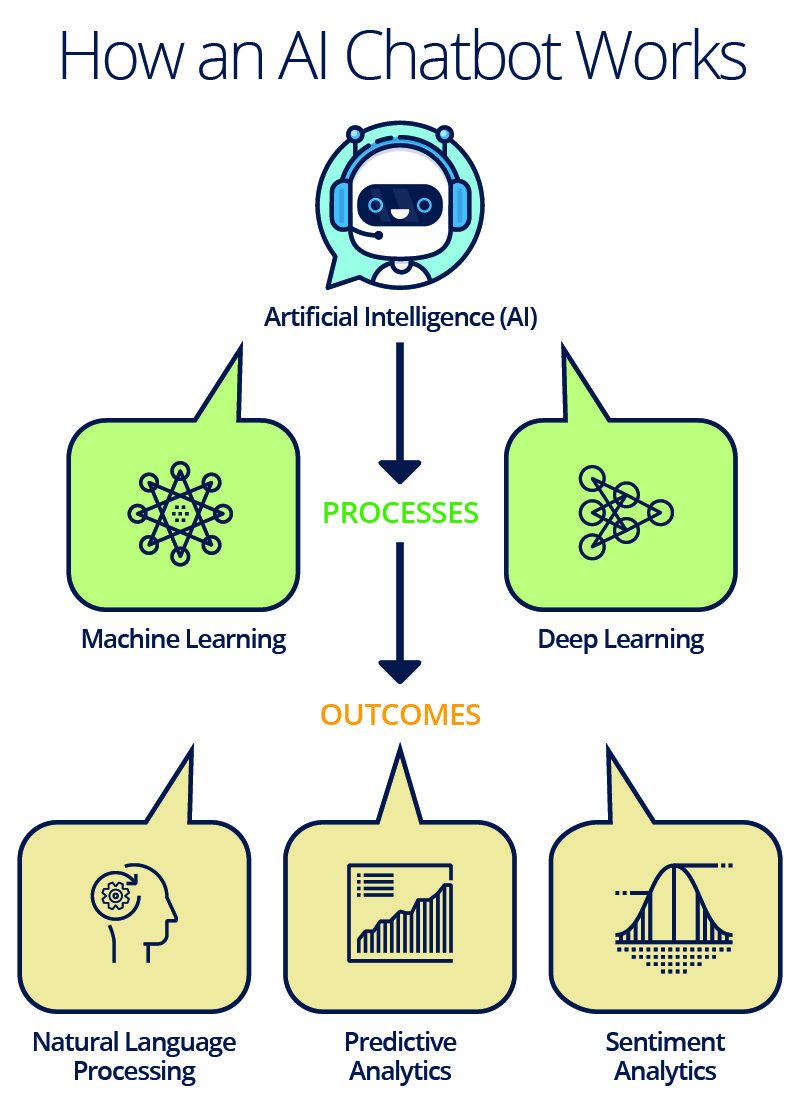
How AI chatbots work (Source: Smartsheet)
The implementation of AI technology in B2B content marketing is predicted to become increasingly important. Use of AI to improve user experience on your site or personalize content for the target audience, by applying data analytics or machine learning, will become crucial. AI can help you understand user behaviour and their interaction with content online to suggest more relevant content to your visitors.
AI content assistants can help you optimize content for quality. AI may be used to automate some tasks in the content creation and distribution processes. AI-powered tools like AI SEO content briefs can help improve SEO for your articles and blog posts. AI content ideation tools can suggest new topic ideas or suitable subject lines for your emails based on the body of the content. Gmail, for instance, is already using its Smart Reply and Smart Compose features to suggest quick replies and subject lines for your emails.
Some AI-powered marketing tools can sift through all your campaigns. Then based on the customer data available, the tools decide which campaign should be sent to each customer or what is the next best step in the customer’s journey to keep them engaged.
6. Search intent
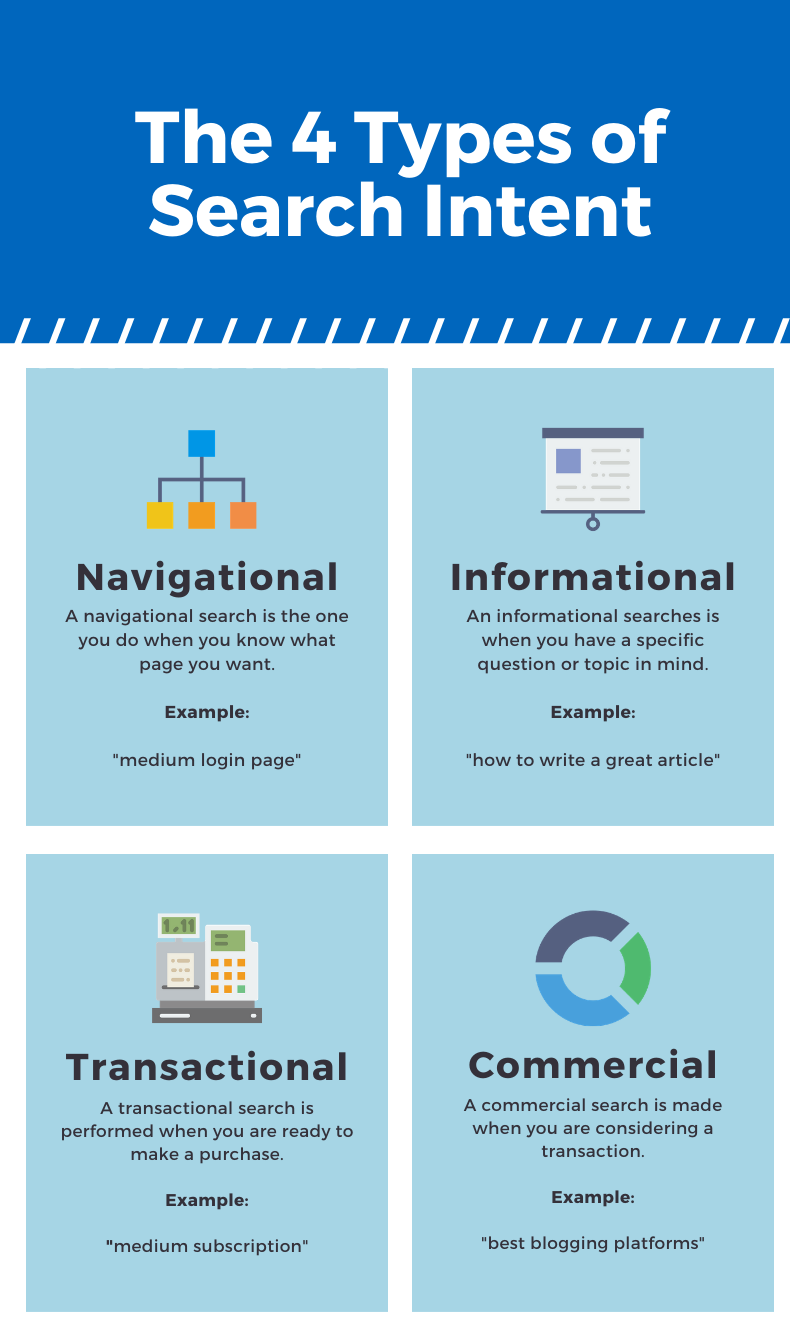
Types of search intent (Source: Bloghands)
No matter which year it is, appearing on the top in search results will always be a priority. That is why creating content by focusing on search intent is going to be very important. Understanding your target audience’s search intent and optimizing your content to fulfill these intents is what will help you bag the top spots on SERPs.
Google wants to bring the desired information to people without them having to look too deep or click on numerous links. You will have to create content that can appear in the featured snippets or the “people also ask” sections. How-to articles, lists, tables or a summary of your article high up on your landing page can help you achieve this.
7. Live videos
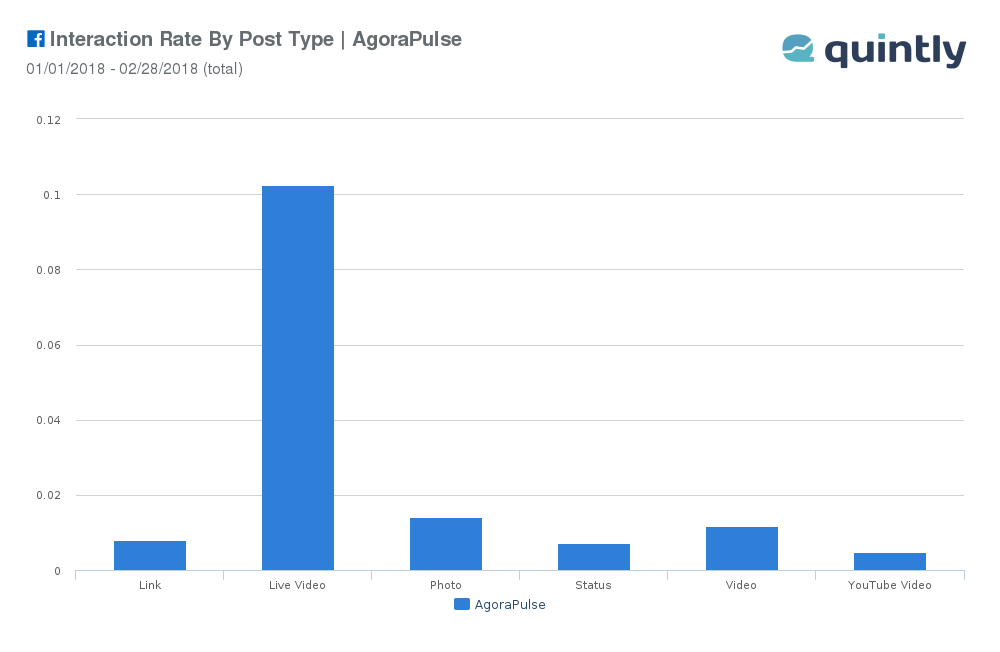
Interaction rate of different post types on Facebook in 2019 (Source: Agora Pulse)
B2B businesses are often seen as faceless corporate entities that only want deals to be closed. But in this day and age, the indifference doesn’t get you enough leads. Even B2B marketers have to add a touch of life to their brands.
Appearing in live videos and interacting with your audience through live stream on social media platforms can give a face to your business’s name. With videos, you can live stream content like webinars, conferences, interviews, office hours and Q&As, that help to build a connection with your audience using their technology.
In fact, there are some live streaming platforms that offer video-on-demand, membership features and the opportunity to monetize your library of video content.
Your clients may be business houses but they are being run by humans as well. You can build trust, engage the audience and connect better with the people in these organizations through live video content.
8. Data-driven content marketing
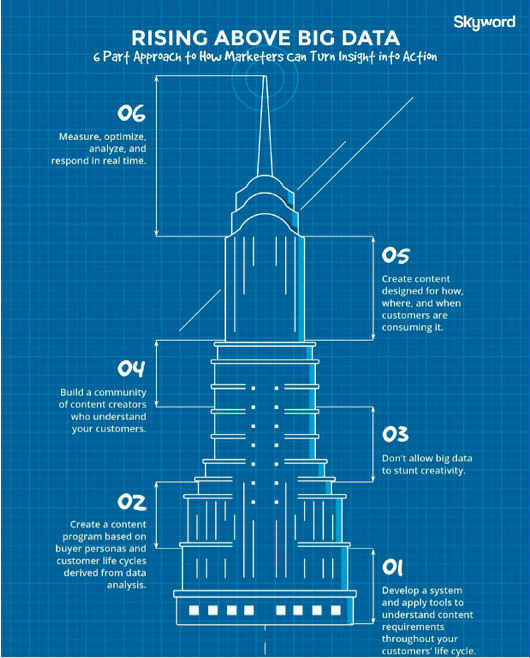
Data-driven content strategy (Source: Content Marketing Institute)
Using analytics and insights to improve your content marketing strategies is never going out of trend. B2B businesses have always depended on data-driven campaigns. B2B marketers will need to determine the metrics that indicate the success of their content.
Find answers to questions such as which sections are being read, how much time is a visitor spending on a page, where did a reader bounce off the page, and more. Gather insights from competing businesses, conduct surveys to learn what your audience wants to see, collect market data to assess what is trending. This knowledge will help you rethink your content strategies aligning them with the audience’s expectations and thus, improve the content experience. You can strike out the sections no one is interested in.
9. Exclusive content for email marketing
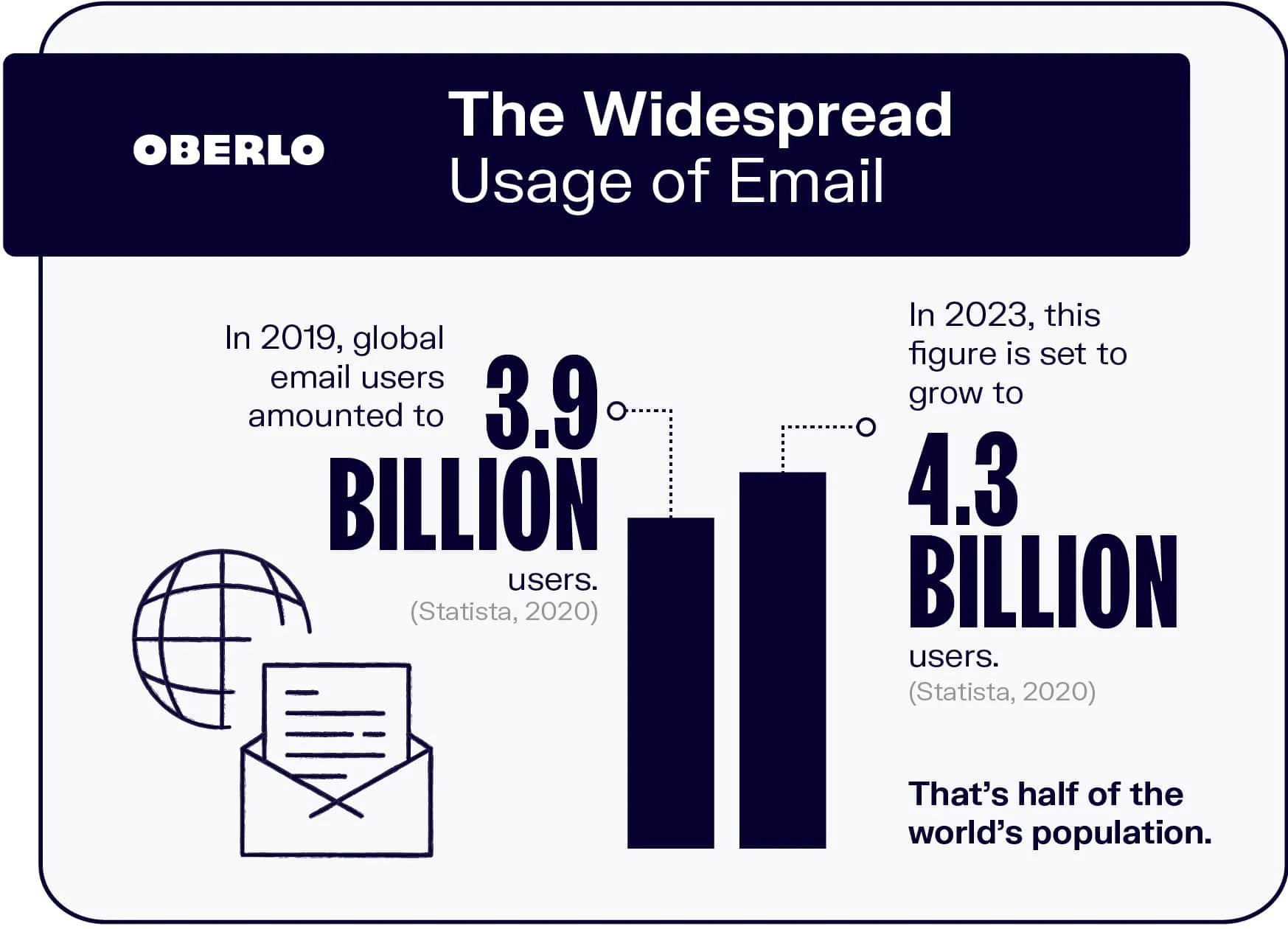
Email marketing statistics 2020 (Source: Oberlo)
Email marketing is not a new B2B content marketing trend, but it is definitely here to stay. According to Hubspot’s 2019 survey, 78% of marketers claim that they have seen an increase in email engagement over the past year. Email still continues to be the second most popular content distribution channel according to the 11th Annual Content Marketing Survey by Content Marketing Institute.
So having a good email content marketing strategy is important for B2B content marketers. You can share newsletters, educational content, send updates about new products, and more. Promote individual blog posts through email and share a short summary of the post to create interest, with a “read full article” button linked to the original post. Or you could send content highlights every week, featuring a few different content pieces that might be relevant to the reader. Send referral codes from time to time, that will give your readers a discount when someone joins through their reference. The key is to keep your email subscribers engaged and more subscribers opting in.
Also you should take full advantage of it by paying special attention to details such as email signature marketing. As your email list grows, the number of eyes on every single of your email messages will increase too, and the importance of those small tweaks will grow exponentially. Plus, that signature is a part of every single of your emails, and it matters more than it first seems.
10. User-generated content
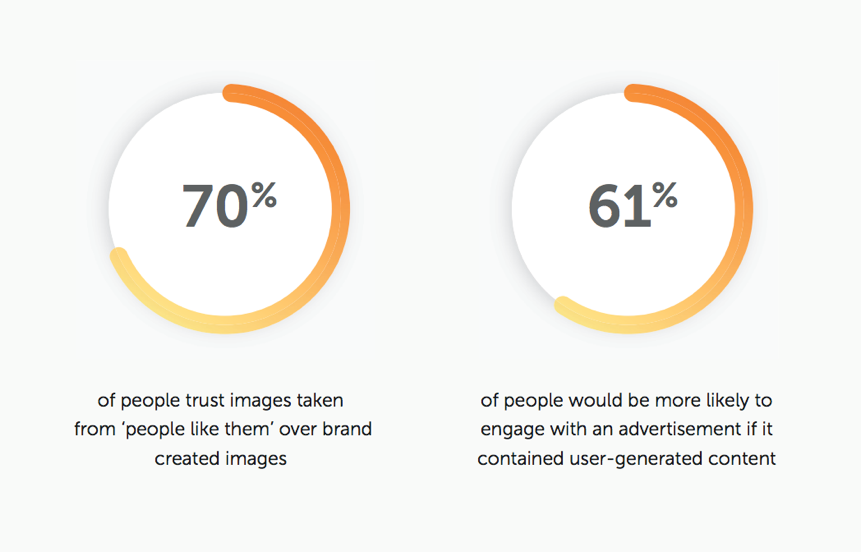
User-generated content statistics (Source: Reevoo)
With the widespread use of social media platforms and networking channels, user-generated content is a great way to build trust among prospective clients. User-generated content not only takes some of the load off your shoulders (since you get some respite from content creation) but also adds diversity to your content.
With a little incentive, you can ask your customers or users to create short and meaningful content promoting your brand. The incentive doesn’t have to be in terms of payment but a little free publicity of their own business is also good enough most of the time. If that doesn’t work, you can always offer a discount or a free gift in exchange for their content. A short review, a how-to video, photos with a trending hashtag or a video on the user experience can be powerful content marketing tools.
11. Omnichannel Marketing
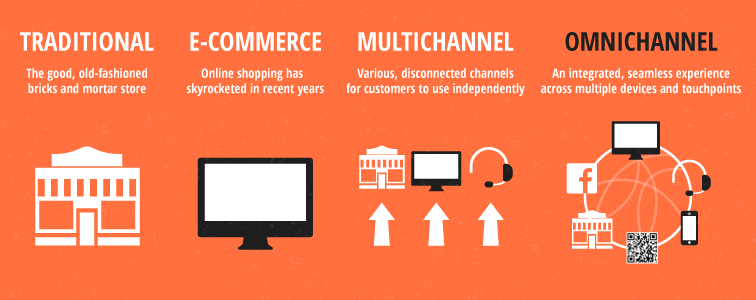
Omnichannel marketing (Source: SnapRetail)
In 2021, you cannot expect your business to stay in the competition if you are not using all the channels available. This is the age of omnichannel marketing. Customers expect your business to be present on all platforms and provide a consistent experience on each of them.
Omnichannel marketing gives you multiple touchpoints with your customers but you have to ensure that there is uniformity in content and user experience on all channels. For example, your desktop site and mobile site should be able to give the same amount of information and use the same tabs for a visitor to navigate through it. Or a product description on your site and on your social media page should look nearly the same. The aim is to maintain a brand identity as well as offer a seamless experience.
12. Experiential content
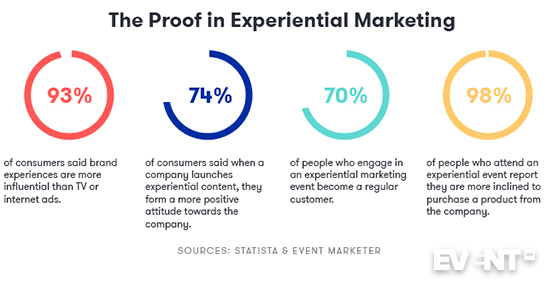
Experiential content statistics (Source: Event Manager Blog)
Immersive experiences are the latest content marketing trend. It is not enough just to engage your audience in a good blog post or an informative video. If you want to grab the attention of not just customers but marketing departments, internal stakeholders or influencers in your niche as well, experiential content is the way to go.
Experiential content can be anything that is fun and brings your content to life. These can be animated infographics, games, audiobooks, augmented reality, virtual reality or even life-like physical experiences (where people get to interact with a popular movie character, say). Anything that makes people feel drawn into the content is experiential marketing and that is one trend you should definitely try and include in your content marketing strategy for 2021.
Conclusion
Keeping up with B2B content marketing trends is extremely important for a B2B content marketer to stay relevant in this age of ever-changing digital marketing landscape. We hope this heads-up on the top B2B content marketing trends for 2021 will help you prepare for the challenges and stay ahead of the competition.
